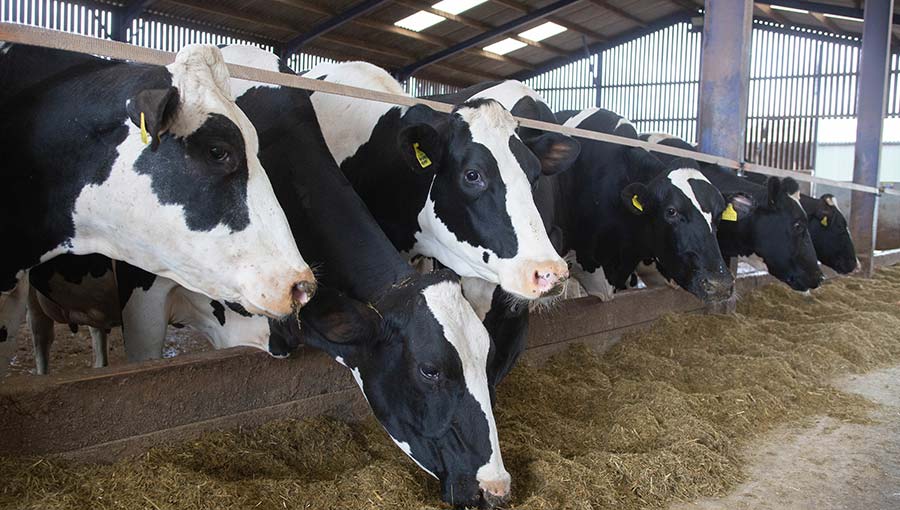Milk margins squeezed by high feed rate and cost
 © Tim Scrivener
© Tim Scrivener Many producers have had to increase feed rates to counter low levels of forage and it is now starting to bite into margins, say nutritionists.
Price reductions have added to the issue on some farms after the strongest UK December milk output for 25 years at 1,234m litres.
Nutritionist James Thomson of Mole Valley Feed solutions told Farmers Weekly that some farms are seeing winter yields up three litres a cow/day, but it’s taking a higher feed rate to achieve it.
See also: Alternative forage options for dairy cows this winter
“Roughly speaking, I’ve seen concentrate feed rate per litre increase from around 0.33kg/litre to 0.39kg/litre,” said Mr Thomson at the Dairy Tech event at Stoneleigh on Wednesday 6 February.
“Feed costs on some units have lifted 2p/litre since September, which, if combined with a milk price drop, could see a farm 3p/litre to 5p/litre worse off, and that’s without accounting for other costs lifting.”
Sourcing feed
Independent nutritionist Hefin Richards, Rumenation Nutrition Consultancy, said farmers could consider buying straw and soya hulls for rations, with both prices easing.
“If farmers can process and handle straw then they could make good use of it,” Mr Richards told Farmers Weekly.
“The availability of moist feeds has improved a little and prices of soya hulls have eased back from about £200/t to £150/t.”
Mr Richards said there was a big range of forage stocks on farm and on the majority of farms he’d seen, stocks were a concern if not a problem.
However, he said forage quality was generally better, which was exacerbating the situation as cows were eating more.
Look at cost-effectiveness, not just price
Farms should judge bought-in feed on its ability and cost-effectiveness to provide what the farm needs, whether it be crude protein, dry matter (DM), starch or metabolisable energy, said Simon Smith, associate consultant at Kingshay.
Mr Smith said people have been “falling off their chair” at buying 35% to 40% DM maize at £60/t but when you compare by-products at 45% to 50% DM at £120/t, the maize is the better buy.
“Analyse your buying on the cost per percentage of protein, dry matter and energy,” said Mr Smith. “Think about what your ration is lacking or could be lacking in the future and tailor accordingly.”
Watch feed rate
With forage tight on some farms there is a risk of feeding too high a proportion of cereal in the diet, milk form forage dropping and acidosis becoming more of an issue.
Mr Smith added: “Some farms that comfortably feed 12-13kg DM of forage a cow a day are now down to 8kg or 9kg, which is when things start to get dicey with rumen health.”
Looking to spring
Mr Thomson said that farmers looking to turnout or eager for the next harvest should check soil nutrient status to make the most of spring growth when it comes.
He advised farmers look at whether nutrients are locked up and check nitrogen, phosphate, potassium and sulphur levels.
Nutrient planning on at least 25% of the farm each year generally costs about £2.50-£5/ha depending on the test and is well worthwhile, he said.
